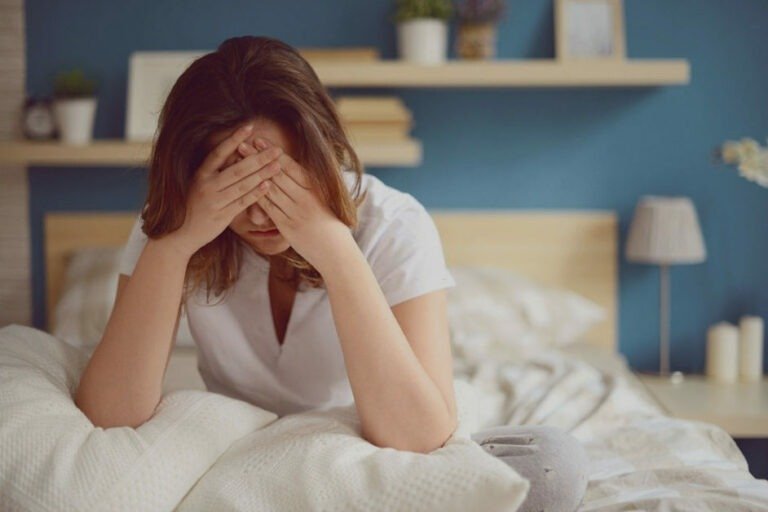The Best Sleeping Positions For Lower Back Pain
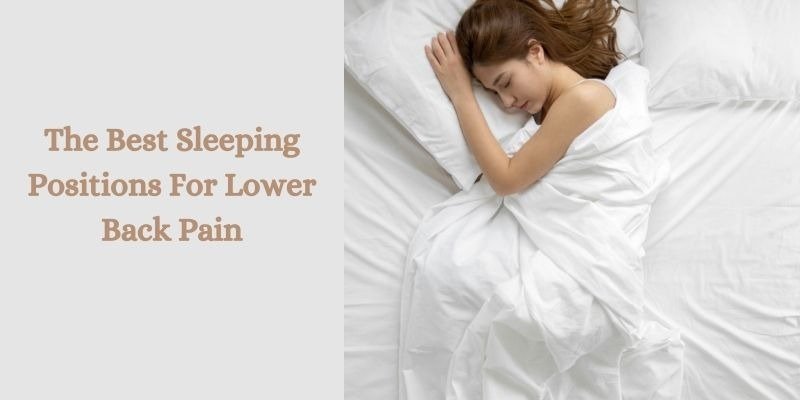
Everyone requires sufficient sleep to maintain good health, mood, body condition, and hormone levels. Getting a proper 8-hour of sleep will provide a positive impact on the body.
At the same time, it is not easy to go to bed when you have body pain. A study shows that lower back pain is the leading cause of disability all over the world. Let us talk in detail about the lower back pain and the sleeping positions to get over it.
What Causes Lower Back Pain?
Lower back pain might not seem like a real big issue. Each of us experiences a different type of back pain. However, the most common reasons include Muscle or Spinal Ligament tension. A sudden movement or frequent lifting of weights can result in muscle strain and causes severe pain. Exercise or any other related physical activity is one of the best ways to reduce back pain. You can also try swimming, walking, or meditation.
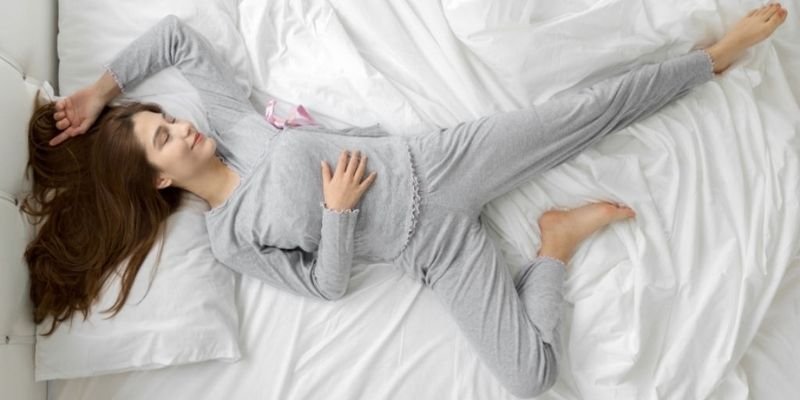
How To Sleep When Having Lower Back Pain?
Sleeping sideways will seem comfier but can potentially cause lower back pain. When you sleep on the side for a long time, it can pull the spine out of alignment and lead to lower back
pain. You can easily fix this problem by putting a soft pillow between your knees.
Tips For People Facing Back Pain:
Studies prove that improper sleeping can make you more liable to pain. Therefore, it is really important to get enough sleep to avoid health complications in the future. Here are the tips that can help you sleep better.
Sleep In A Proper Position:
There is a huge possibility that you face back pain due to improper sleeping positions. You have to try different sleeping positions and choose the comfortable one for you. For instance, try to sleep with and without a pillow underneath your legs.
It is good to avoid sleeping on your belly, as it creates an ample amount of stress on your back. Instead of this, put a pillow under your abdomen.
Invest In A Good Mattress:
Sleeping on the wrong mattress can create or aggravate lower back pain. It will lead to poor sleeping posture as it lacks proper support. It also causes muscle strains, spine alignment issues, body pain, etc.
A study shows that almost 63% of people report that they experience lower back pain after swapping to a new mattress. You can find numerous mattress options in both retail and online stores. Try to experiment with different types and pick the suitable one for you. Make sure the mattress helps you to maintain the spine aligned properly.
A soft mattress can be suitable if you have wider hips than your waist. It will let your spine stay firm when you’re sleeping. A tough bed might feel more suitable as it gives additional support to the back.
Involve in physical activity:
When you are regularly involved in any physical activity, you can improve the quality of sleep. The major necessity of this process is to keep your core health strong. At the same time, it relieves the pressure on the lower back, abdomen, pelvis, and hip regions.
Building strength in the muscles can lower the chances of experiencing back pain or muscle spasms. One of the best exercises to relieve muscle pain is a plank. If you stay in this plank position for 20 to 30 seconds, your spine will get a proper alignment.
Medication:
For some people, it is hard to sleep at night especially when facing back pain problems. But you don’t have to worry because we have medications that will help to sleep better. Most importantly, this procedure has to be carried out only under the guidance of a medic/doctor. The main goal of medication is to help you create a proper sleep routine.
The medication comprises pain relievers or painkillers along with sleeping tablets. You have to be careful when it comes to the dosage. An improper intake of these medications can also lead to death.
The pain relievers are aspirin, Advil, acetaminophen, and ibuprofen for short-time use. For long-lasting pain relief, you can try Naproxen sodium Aleve. The medications like Ambien, zaleplon, suvorexant are sleeping pills. The doctor prescribed medications might also include muscle pain relief pills, anti-depressant pills, and muscle relaxants.
Stress and sleeping pattern:
The common problem for adolescents is lack of sleep (insomnia). But do you know? It can cause health issues related to back pain. We face immense pressure at work that can lead to improper sleeping schedules. So, it is necessary to keep yourself relaxed and reduce stress. Cut down the intake of caffeine and alcohol.
Follow regular exercise sessions in the morning or try other relaxation methods to relieve stress.
Sleeping in a proper routine will show positive results in health. Try to sleep in a regular timing pattern every day. It is advisable to sleep and wake up as early as possible. Try to avoid electronic disturbances like mobile phones, television, or other gadgets near the bed.
The Best Sleeping Positions To Relieve Lower Back Pain:
Now you are all set to sleep properly at night. But, what position can you sleep in to get a maximum output? Don’t worry! We have gathered a list of a few sleeping positions in detail. Let us dig in to know further about it.
1. Lying on your side with a pillow between your legs
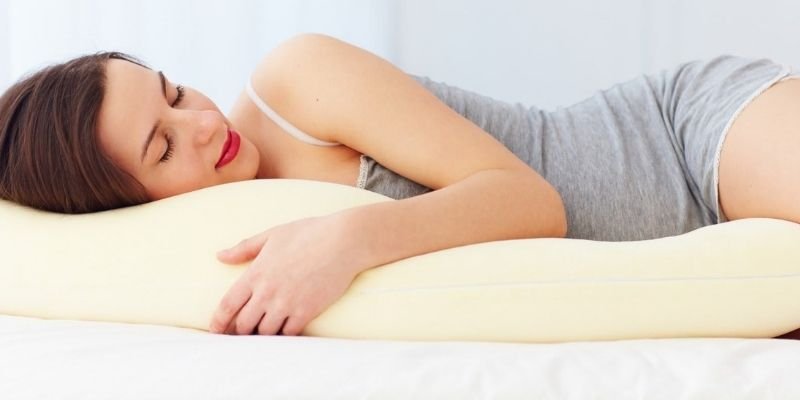
As we discussed earlier, this is a popular sleeping position that can lower back pain. If you have back pain, try to sleep sideways with low pressure on the back.
How to sleep in this position:
- Keep your shoulders and the rest of your body in contact with the mattress.
- Keep a soft pillow between the knees. If you have a gap between the waist and mattress, use another pillow for additional support.
At the same time, you have to resist the urge to sleep on the same side. One of the leading causes is muscle imbalance and scoliosis.
Benefits of sleeping in this position:
Sleeping sideways will not make you feel better, but keeping a pillow between the knees will work. It will help you keep the alignment of hips, pelvis, and spine properly.
2. Sleep sideways in the fetal position
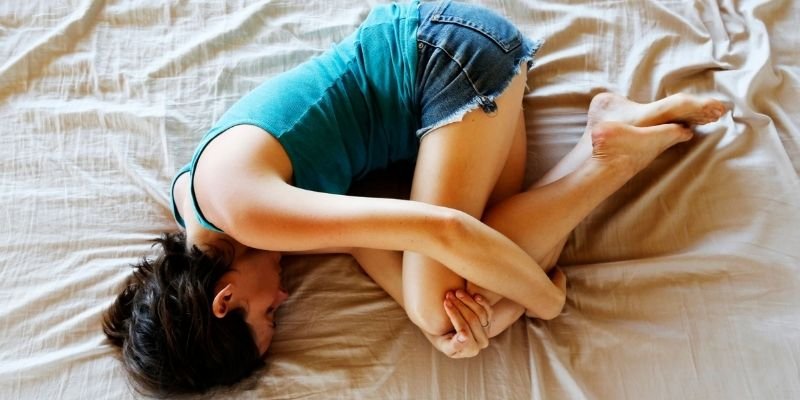
Sleeping in the fetal position is the best choice for people with a herniated disc.
How to sleep in this position:
- Sleep on your back
- Then move gently onto your side and tuck your knees toward your chest.
- Curl your torso toward your knees.
- Always remember to swap sides from time to time to avoid any imbalances.
Benefits of sleeping in this position:
The spinal discs are soft cushions between the vertebrae in the spine. The herniation occurs when part of the disc moves from its original location. Curving your torso into a fetal position empties the space between spinal vertebrae. This sleeping position also reduces tension on discs and prevents the spine from curling backward.
3. Lying on your back in a reclined position

Even though sleeping in a chair may not be the most suitable choice for back pain, it will be helpful if you have isthmic spondylolisthesis. To create better support, keep the bed in a slumped position. Alternatively, you can invest in an adjustable bed for achieving a reclined position.
How to sleep in this position:
- Place a pillow under your back or adjust your mattress in a reclined position.
Benefits of sleeping in this position:
When the vertebra descends over the one below it, it is known as isthmic spondylolisthesis. Sleeping in a reclined position will create an angle between the trunk and thighs. It reduces the pressure on your spinal cord.
4. Sleep on your stomach with a pillow under it
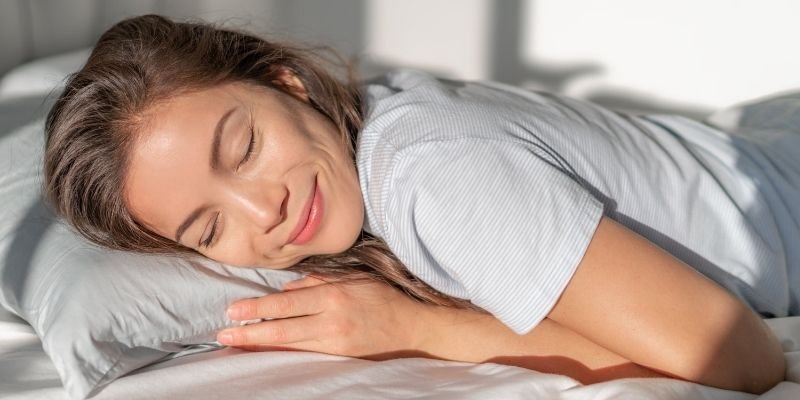
There is a common opinion that sleeping in this position will be bad for back pain. However, we cannot deny it because it creates stress on your neck. This position can also cause a slight pressure when your whole body weight lies on the stomach.
How to sleep in this position:
- Put a pillow beneath your pelvic region and lower abdomen.
- Based on your comfort, you can either keep a pillow below your head or not.
Benefits of sleeping in this position:
Sleeping on your stomach may benefit the person who has degenerative disc disease. It has the capacity to relieve any type of pressure on the space between the discs.
5. Lying on your back with a pillow under your knees
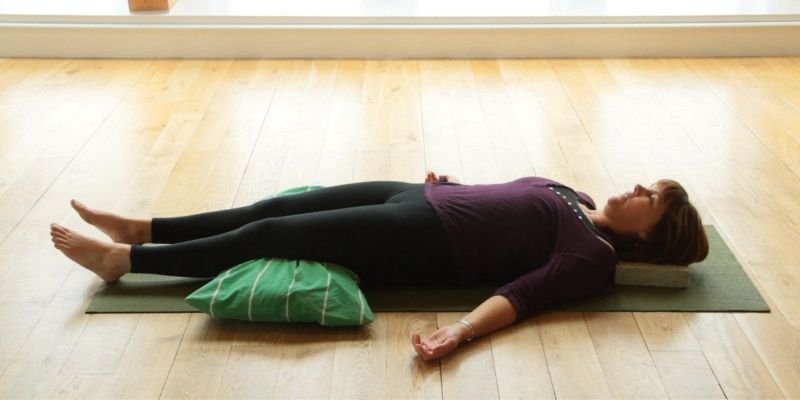
This sleeping position might be the best choice to relieve lower back pain. It will spread all the stress across your body evenly and release pressure on muscles.
How to sleep in this position:
- Keep a pillow under your knees and support your spine in a neutral position. It will maintain the curve in your lower back.
- Instead, you can place a small pillow beneath the back for additional support.
Benefits of sleeping in this position:
Lying on your back will disperse the body weight across the broad area of the body. Thus, it relieves muscle pressure and keeps the spine alignment in place.
Back pain is a more common issue for women than men. Almost 30% of adult women face lower back problems, while men face around 25% of back pain issues. Due to work-from-home conditions, the back pain problems are more aggravating. Therefore, we have to get an apt amount of sleep to reduce any further health complications in the future.
PainPathways Magazine
PainPathways is the first, only and ultimate pain magazine. First published in spring 2008, PainPathways is the culmination of the vision of Richard L. Rauck, MD, to provide a shared resource for people living with and caring for others in pain. This quarterly resource not only provides in-depth information on current treatments, therapies and research studies but also connects people who live with pain, both personally and professionally.
View All By PainPathways





